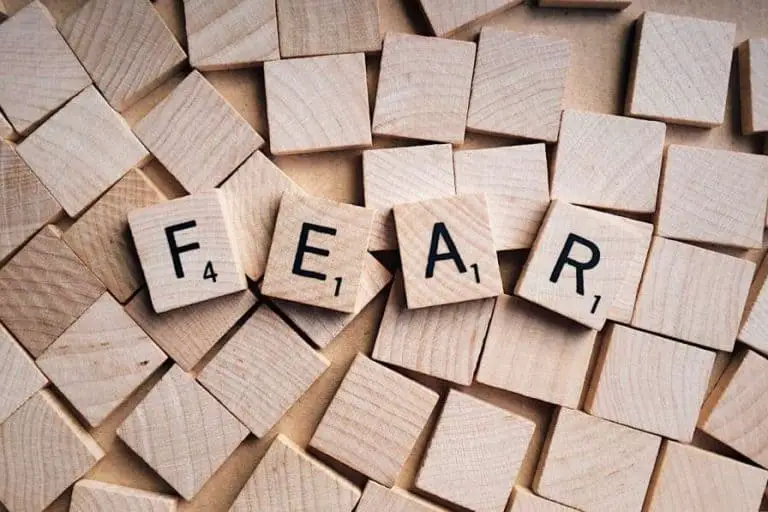What Are The Differences Between A Good and A Bad Speech?
As we grow up, whether for academic purposes or professional reasons, we are incentivized to get familiar with public speaking, often in the form of speeches. Although giving speeches is not rocket science, minor aspects can transform the audience’s perception of them.
For that reason, it’s important that you know the difference between a good and a bad speech. Good and bad speeches differ from each other in their essence. The characteristics that make a speech considered good are the same lacking in what we consider a bad speech. Let’s look deep into it!

What Are The Differences Between A Good and A Bad Speech?
11 Qualities of A Good Speech
—Audience Centered.
By definition, a speech is a form of discourse directed at a group of people, the audience. For that reason, a good speech honors that definition and has the audience at the center of it.
Directing a speech at the audience means studying the audience before thinking about the speech, being in touch with the main characteristics of the audience, as those largely influence the way they will take the speech.
—Clear.
A speech should have a defined and clearly stated topic and be conducted in clear and understandable language.
Anyone in your audience should be able to understand it and, since the audience is mostly diverse, the least you can do to help them is use simple and clear terms.
Avoid using “hmm” or any other ambiguous terms that might cause confusion or obstruct everyone’s understanding.
—Delivered With Confidence.
Your audience wants to know that they can rely on what you’re saying and on you. Lack of confidence ruins the process of trust-building.
One doesn’t need to state that they are shy; if you stand in a curved posture, with your arms awkwardly placed or with your gaze at the floor, rather than on the people, the audience will catch onto your awkwardness, and that might cause discomfort among them.
And although shyness isn’t a crime, if you genuinely want to give good speeches, you need to become a confident speaker.
How To Become A Confident Speaker:
My best advice is: start by practicing a lot. Some of the most confident speakers go as far as taking diction lessons to build their confidence. If that’s what it takes for you to be at their level, do it.
Something that also helps when practicing is recording yourself while you give a speech, so you can see firsthand what your weaknesses and strong points are. You can also have a friend watch you give a speech, so they can help point them out as well.
Investigate more about confidence and find the methods that work for you to improve it.
Don’t try to copy someone else’s style of speaking, instead find your own and develop it without giving too much thought to what others think of it. Even if it’s different, if you feel confident speaking in that style, you’re on the right track.
—Supported By Facts.
A good speech isn’t just some rambling of a topic made up of the speaker’s imagination.
Although there’s nothing wrong with the speaker exploring an idea or concept that he has thought about, a speech backed up by facts is much more credible and therefore accepted by the audience.
For that reason, using studies, theories, and statistics to support a speech is in the speaker’s best interest if he wants to give a good one.
—Supported By Visuals or Infographics.
Besides giving a more professional look to your speech, infographics like flyers, for example, help guide the audience during the speech and guarantee that they retain the key points of your speech.
—Paced.
A speech needs to have just the right speed to make sure that people understand what is being said, yet they don’t get bored of it all because of how long it took.
A good speech is neither too fast nor too slow but paced instead.
—Delivered In An Engaging Way.
Like I’ve mentioned before, a clear speech that bores the audience is still not a good enough speech. If the point of the speech is to have the audience’s interest, a good speech should also consider the engagement factor.
A good speech has humor and has interaction between the audience and the speaker, usually something of an informal nature that makes them feel a closer bond to the speaker without disregarding the context, like a game or a live quiz, for example.
—Delivered With Regulated Emotions.
A good speech shouldn’t be overwhelmingly emotional, nor should it lack emotions altogether. It should demonstrate the speaker’s emotional intelligence and awareness.
—Including Good Body Language.
Good body language shows the speaker’s confidence and communicates that he knows what he is doing.
A speech with no regard for body language has a high risk of being awkward and making the audience feel uncomfortable. And that is a recipe for disaster, regardless of how well placed the grammar is.
—Well Structured.
A good speech follows a structure that keeps it as objective and straightforward as possible. That structure should have a three parts introduction paragraph (to give people an idea of what to expect from the speech or guide them on what to focus on), the development (where all the main information usually is at), and a “banger” conclusion (memorable enough to keep in their minds the main points of the speech).
—Leaving Room For The Audience’s Participation.
Like I’ve been saying through the article, the audience is a crucial factor when making a speech. A good speech is not only designed for the audience but also accommodates their opinions, even if just at the end of it, whether through a Q&A or even through a live survey.
Highly Recommended Next Articles to Look At
-
What Makes A Bad Public Speaker? Top 10 Worst Traits To Avoid

An audience will always give apt attention to a public speaker that keeps his message clear, simple, and easy to comprehend. Besides, nobody likes a bad public speaker and would want to waste their precious time under the logos of a boring orator. Below are ten carefully selected traits or qualities that make a bad…
-
Want to Stand Out? 15 Key Tips for an Awesome Presentation

Presentation skills are often taken for granted, and developing and practicing these skills will give you a huge advantage. There is nothing less engaging than a dispassionate speaker flipping through slides for a set amount of time. To stand out, follow these key steps and turn an okay presentation into an awesome one! The fifteen…
-
How to Become a Confident Public Speaker – 6 Tips

Ever wondered what it feels like to command a room filled with people just with the way you speak? How to Become a Confident Public Speaker ? No, it’s not a gift (in case you are wondering); rather, it takes practice and time for you to master the art of public speaking. This simply means…
11 Characteristics of A Bad Speech:
—Generic.
The first mistake made in all bad speeches is not clarifying who it’s directed to. A speech without a clear receptor and with a vague target cannot be mindful of the audience’s preferences and therefore has a high potential of being considered bad by them.
—Unclear.
The use of complex language and terms, the use of a bad tone (either too low or too high or too awkward), or even the use of words that don’t convey any real meaning and that don’t add anything to the speech are all things that make a speech bad.
—Lacking Confidence.
If the speaker is too nervous during the speech and his body language doesn’t align with the speech because he has a bad posture or even bad manners, the speech automatically becomes bad, regardless of how well structured the actual text of the speech is.
Too much nervousness is a sign of unsureness, and people have a hard time trusting those who seem unsure of themselves or whatever they are doing.
—Unprepared.
Bad speeches usually take place when people are unprepared for them. Being unprepared ranges from anything like not having a structure, not having a written down version of the speech (or at least a written down list of the main topics) to not having the speech memorized, as that usually results in a waste of time and resources because the speech doesn’t follow through.
Not having proper knowledge of the subject is also a sign of being unprepared, and in this case, the best thing to do is to study the subject before giving the speech.
—Based on Suppositions or Personal Opinions.
Nobody wants to sit (sometimes) hours of their life through a speech that has no actual facts in it or supporting it. Like I’ve said before, although personal opinions with some proven knowledge are acceptable, a speech solely based on subjective opinion (and nothing else) is usually bad as it most likely doesn’t add to the listeners’ lives.
—With No Additional Info or Aid.
A speech that doesn’t prioritize the audience’s fundamental understanding of it by not providing any aid or supporting information on the speech in the form of flyers or infographics is bad.
How will the audience follow the speech and follow what is being said if they have no guidance? They more likely will miss valuable information from the speech because staying focused through someone talking isn’t always easy.
—Too Fast or Too Slow.
I’ve said before that a speech that’s too fast to be understood or too slow, to the point of boring the listeners, is bad.
—Boring Deliverance.
A speech that isn’t interactive, is too serious and strict, and doesn’t include any moments where people can relax for a second and laugh or play most likely tires the audience and is therefore bad.
—Overzealous Speech.
People usually don’t know how to process and deal with polarizing displays of emotions. Most people feel awkward about it and would rather not deal with them.
For that reason, a tendency of overzealousness can ruin a speech.
—Too Focused on The Deliverance but Lacking Content.
Although the deliverance is essential, a speech that’s only focused on it, to the point of disregarding the importance of good and quality content and structure, is generally bad as nothing really can be retained from it.
Good quality content isn’t only well-studied content but also content that is original (not copied from anybody) and that is within the proper context of the speech
—Exclusive.
Although the point of the speech is having someone talk to a group of listeners, those listeners want to feel included in the speech, either by a clear demonstration of thought about the audience or through their actual participation in the speech. A speech that fails to do that is bad.
Another good way to learn is by example. For that reason I’ve gathered a few examples of what to do and what not to do when giving a speech.
Examples of Famous Good Speeches:
A couple of famous good speeches that you should read and learn from are:
—Martin Luther King’s “I Have A Dream” speech.
It’s known as one of the best speeches ever made, for how well it ticked all the boxes of a good speech’s list of requirements.
—Sojourner Truth’s 1851 “Ain’t I A Woman?” speech.
It’s a public appeal for equal rights for women and men that also exemplifies the qualities of a good speech and its power.
Examples of Famous Bad Speeches:
Some of the worst speeches that are continuously used as examples of what not to do are:
—Melania Trump’s 2016 Republican National Convention Speech.
It caused controversy because it was too similar to Michelle Obama’s speech, to the point where it’s hard to believe the similarities are a coincidence and not plagiarism.
—The speech of the American politician who screamed while rallying votes.
Probably one of the most used examples. It’s a great depiction of the effects of no preparation in the sense of a disregard for the amount of passion put in a speech, overzealousness, and a great lack of social and self-awareness.
Another great way to learn about speeches is through books.
Books To Improve Public Speaking:
A list of good books about public speaking that will help improve your speech skills:
—The Quick & Easy Way To Effective Speaking, a self-help book by the American lecturer and bestselling writer Dale Carnigie, that takes you, step by step, on a journey to great public speaking.
—Talk Like TED, a book by Carmine Gallo, a guide to public speaking based on scientific analysis of hundreds of famous TED talks.
Further Readings (and Viewings)
What is the difference between a good speaker and a bad speaker?. BOARDGAMES TIPS
Good Presentation VS Bad Presentation







